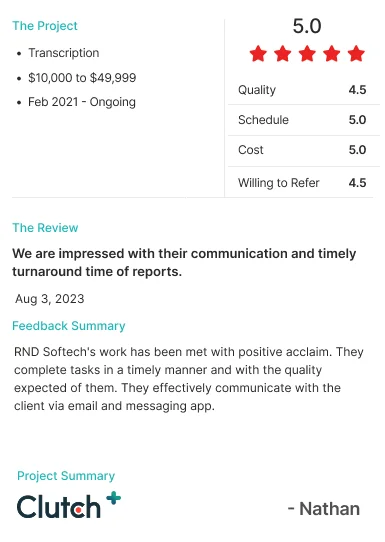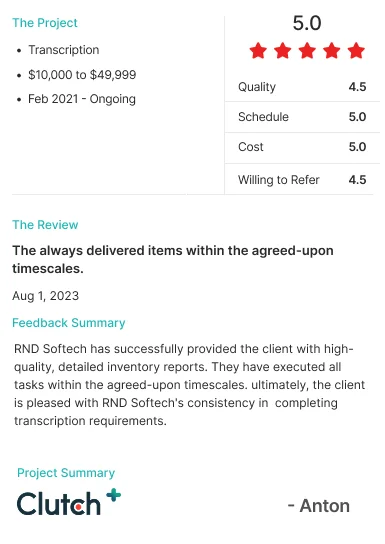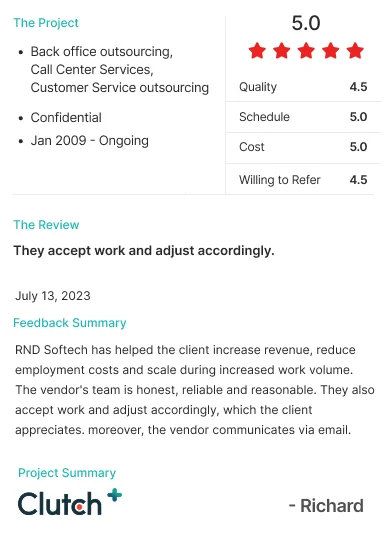Introduction
-
For real estate and property management, the property inventory transcription service is the cornerstone of accurate record-keeping, dispute resolution & seamless property handovers.
Landlords: It ensures that their property is well-documented and protected.
Agencies: It builds trust, professionalism & transparency.
Tenants: It serves as evidence that their rights are safeguarded in their services.
The accurate property inventory records help to avoid disputes between the landlords and tenants & they support the fair agreement by providing a clear reference point. In previous days, the process of taking property inventory condition relied on handwritten notes, checklists & physical files.
Manual
Property inventory agencies assign a particular inspector or agent who would walk through a property with a clipboard, writing down details about walls, floors, furniture & appliances, etc. During the process of taking handwritten notes, some issues may arise from illegible handwriting, missing details, damaged paper, or unclear photos.
Technology
Over the years, technology has started to reshape industries. The transformation of paper-based records to digital formats in property inventory helps to enter the property's conditions in a word processor by typing, formatting & storing electronically. Later, to process faster, more accurate & far more user-friendly specialized software platforms and mobile apps have taken over the part.
AI
The field has entered a new era with AI-driven transcription tools & RPA (Robotic Process Automation). These kind of tools helps to generate well-structured reports quickly with attached images or videos for strong proof. And it identifies the future property issues by analyzing the data.
The era of handwritten notes:
For decades the inspectors or agents walk through with a clipboard, a pen & a printed checklist to analyze the property's condition, such as the condition of the floors, the paints on the walls, or the presence of furniture manually.
1. Unclear or inconsistent handwriting
Each inspector has their own way of writing, shorthand & level of detail. When we document these details later could appear vague, easy, or even unreadable.
Ex: If the inspector mentions the "marks on the wall" in the handwritten notes, while documenting, it will create confusion, like which side of the wall is right or left.
This lack of clarity can create disputes/disagreements between landlords, tenants, or agents. It slows down the process and weakens trust in the accuracy and fairness of the property inventory itself.
2. Risk of loss or damage
When taking notes manually, the latter physical damage might happen, like accidentally being misplaced, torn, smudged, or even destroyed by water, fire, or exposure to sunlight over time.
To verify the tenants' deposit, auditing property conditions, or handling insurance claims, the records often need to be referred to months or even years. Even a single damage can lead to a dispute or disagreement.
3. Time-consuming to update or share
When the need to update an item after maintenance, correct an error, or add a new observation is difficult in a handwritten property inventory record. Rewriting the required manual process is slow and leads to mistakes.
If the documents are shared via email, or scanned & emailed wait time will be days or even weeks to confirm or access the information.
4. Errors and inconsistencies
Manual note-taking is purely dependent on the inspector's memory, observation skills & attention to detail. There is no structured format to take the notes; it depends on their own style, like shorthand or providing a lengthy description.
Due to time pressure, the inspector might leave some property conditions or duplicate entries can happen. The disagreements between landlords, tenants & agents can happen when a deposit deduction happens without an accurate report.
Transition to early digital tools
The transition of handwritten notes to word processors and spreadsheets is good. Typed notes are neater, searchable & easier to copy than a crack of folders in this way. A digitalized form of property inventory report can store multiple copies and can distribute the report to landlords, tenants via email or network drives faster.
Drawbacks
? Manual transcription persisted
? No multimedia context
? Version and access control issues
? Limited automation & validation
Rise of specialized property inventory software
The dedicated property inventory platforms handle the whole workflow from semi-manual file handling to structured, mobile-first processes that match how inspections are actually performed. Using mobile apps for onsite capture and standardized templates or checklists can lead to an accurate report. Additionally, it helps to generate a PDF report automatically and can be shared instantly.
Challenges
? Cost & onboarding
? Data Privacy & Compliance
? Offline capability
? Vendor lock-in & data migration
The role of transcription services in digitization
The transcription service is forming the bridge between the old and new worlds by converting those historical paper records into structured digital data. It converts the raw text into a structured report like field of room, item, condition, date & map, then to the target software schema.
Challenges
? Variable handwriting quality
? Context & ambiguity
? Data privacy
? Cost
Integration of AI & automation
Artificial intelligence (AI), robotic process automation (RPA) & large language models (LLMs) are taking property inventory transcription to the next level.
? Convert voice notes into structured reports - AI can instantly transcribe voice recordings into professional, standardized inventory records in speech-to-text systems. Inspectors no longer walk through the clipboard or notebook to take notes on the property's condition.
? Extract details automatically from documents - AI models and optical character recognition (OCR) can scan handwritten or printed notes and turn them into searchable, digital files.
? Automate repetitive tasks - RPA can help the reports to format, fill & distribute by saves hours from manual work.
? Predict property trends - AI can highlight the recurring issues & provide actionable insights by analyzing the past inspection data.
AI + Human-in-loop
AI, RPA & LLMs help in generating the property inventory report with speed and accuracy. But still it requires context, judgement & verification that machines alone can't fully provide.
AI handles the capturing of voice notes, extracting details & organizing structured reports.
Humans validate & ensure descriptions are accurate, photos align with notes & the final report meets compliance and professional standards.
To minimize the errors, prevent disputes with the trust partner, the property inventory transcription service who process with a balanced approach.
Wrap
Property inventory transcription has undergone a remarkable transformation from the era of handwritten notes to today's AI-driven, automated workflows. The inconsistency in paperwork has now become a streamlined, transparent & data-driven process.
The balanced approach of AI + human judgment can safeguard trust, reduce disputes & enable property professionals to move from simply documenting conditions to strategically managing properties with confidence.
Bridge the gap between handwritten notes and digital intelligence by partnering with our property inventory transcription service.
Author
Article Written by
Priya TM
Priya T.M, Vice President & COO- brings over 25 years of leadership and strategic expertise, from pioneering ISO-certified, Global offshore staffing solutions to driving the IT, Software, Healthcare operations at RND Softech.










